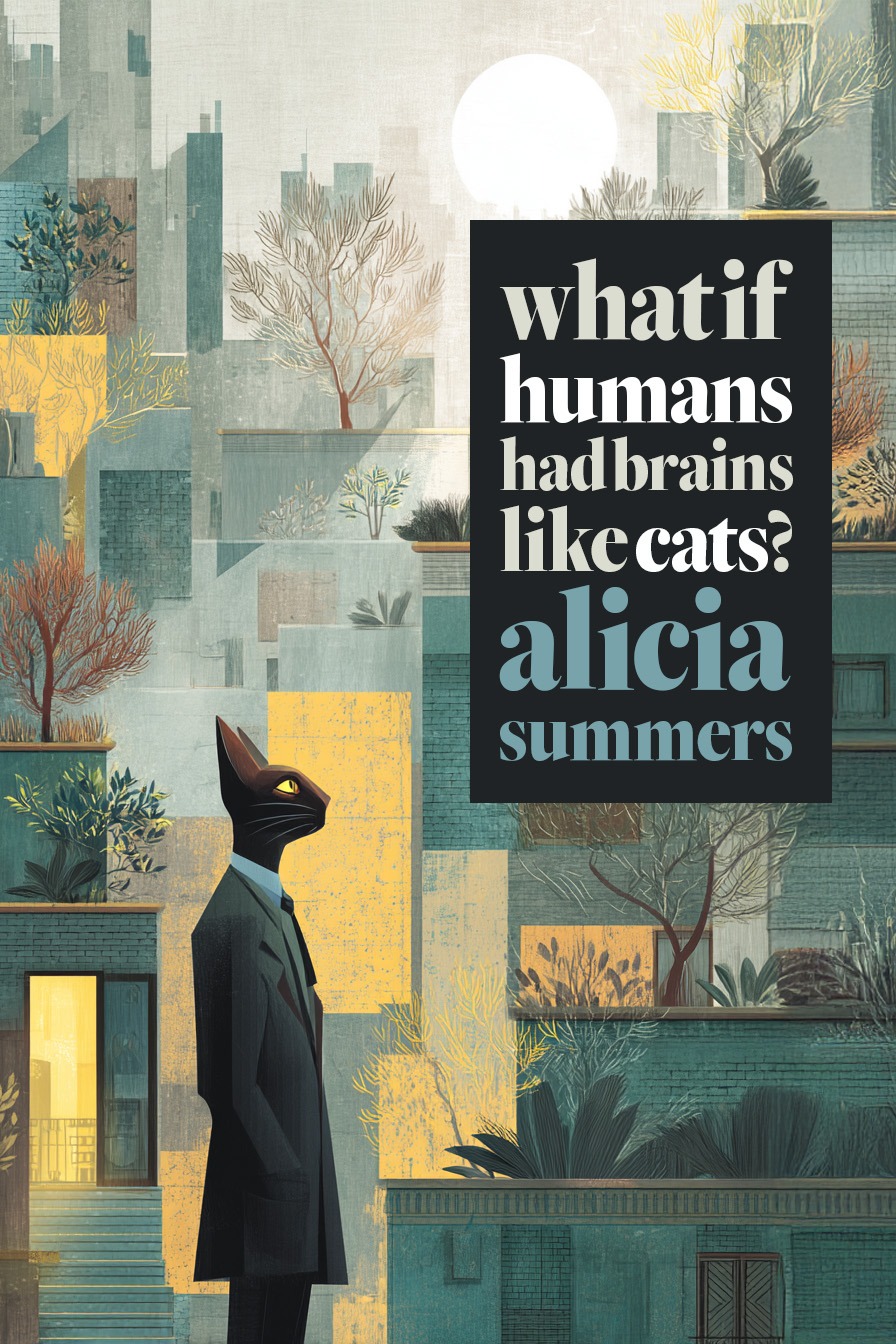From cultural anthropologist and storyteller Summers, Alicia comes a curious, big-hearted exploration of a delightfully serious question: what if humans had brains like cats? Blending field notes, interviews, and vivid travelogue, this book invites readers to imagine a world remapped by whiskers, scent, and sunbeams, where attention flickers like a tail-tip and entire cities are organized around windowsills, rooftop gardens, and midnight trains. It is packed with tactile details and of-the-moment observations—equal parts science primer and warm companion for anyone who has watched a street cat pick its path and wondered what it knows that we don't.
Summers leads us through feline neuroanatomy with an accessible, sparkling voice. She unpacks the barrel cortex that would make human whiskers (yes, we'd have them) a dominant sense for navigation; the superior colliculus that would bias our attention toward motion; the enlarged olfactory bulb that would turn neighborhoods into overlapping maps of story-rich smells; and the purr, a low-frequency vibration with intriguing links to relaxation and healing. She then layers those findings into daily life. In a cat-brained society, language would skew toward chirps, trills, and clipped syllables; punctuation might evolve into ear-tilt marks and tail-position glyphs; texting would lean on looping gifs of small, meaningful motions. Trending aesthetics would sprout suffixes like knead-core and windowsill-core. A viral meme called sun-mote brainrot would sweep feeds each winter afternoon.
The book moves from Istanbul's Galata and Balat districts—where cats thread between tea glasses and shoe-repair stools—to Houtong Cat Village in Taiwan, the ruins at Largo di Torre Argentina in Rome, and the adobe courtyards of Santa Fe at blue hour. Along the way, Summers talks with Dr. Sibel Yilmaz, a vision scientist modeling motion-biased attention at Bogazici University; a Tucson neuroscientist mapping vibrissae pathways; a Lisbon conductor who times late-night trains to the city's crepuscular rhythms; and volunteers at community cat colonies who demonstrate how overlapping territories can become networks of care.
Architecture and urban planning get a feline retrofit: whisker-safe doorways sized to avoid sensory overload; vertical greenways that favor climbing and vantage; night-friendly lighting that respects the hunt for quiet rather than conquest; library stacks lined in felt, where study happens in dusk-and-dawn bursts. Work and school shift, too, into polyphasic schedules that honor naps as neural maintenance. Meetings shrink into short, intense sprints. Creativity spikes at liminal hours. Social structures tilt toward gentle, semi-solitary intimacy: thresholds become sites of generosity; found families coalesce around shared bowls and shared windows.
With the eye of a traveler and the care of an educator, Summers also traces how our metaphors would change. Grief softens into phrases like curled-into-quiet; desire registers as a low, steady purr that can be felt across a couch. Online, slang shows the fingerprints of instinct—looping play, scent-coded status, algorithmic feeds tuned to shimmer and rustle. The result is a reframing of human values through feline perception: not escapism, but a practical thought experiment that illuminates attention, consent, comfort, and community in the world we actually inhabit.
What if humans had brains like cats is an energetic journey through neuroscience, culture, and design, grounded in data, enlivened by travel and tactile detail, and animated by a simple proposition—that how we sense the world reshapes how we live together in it.
